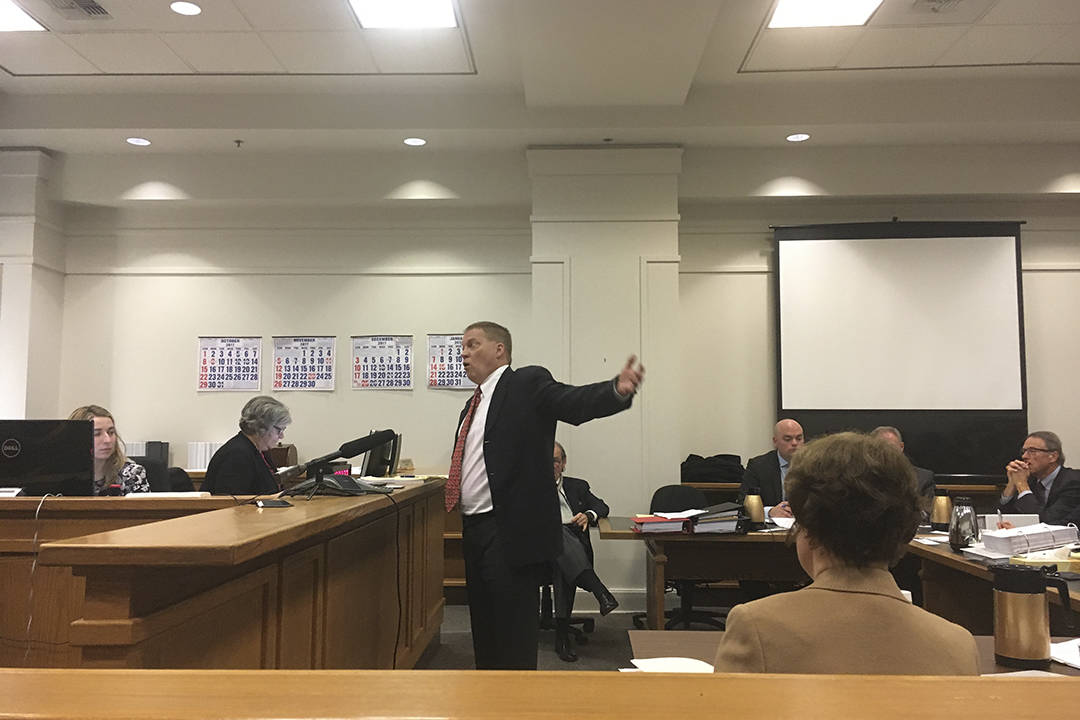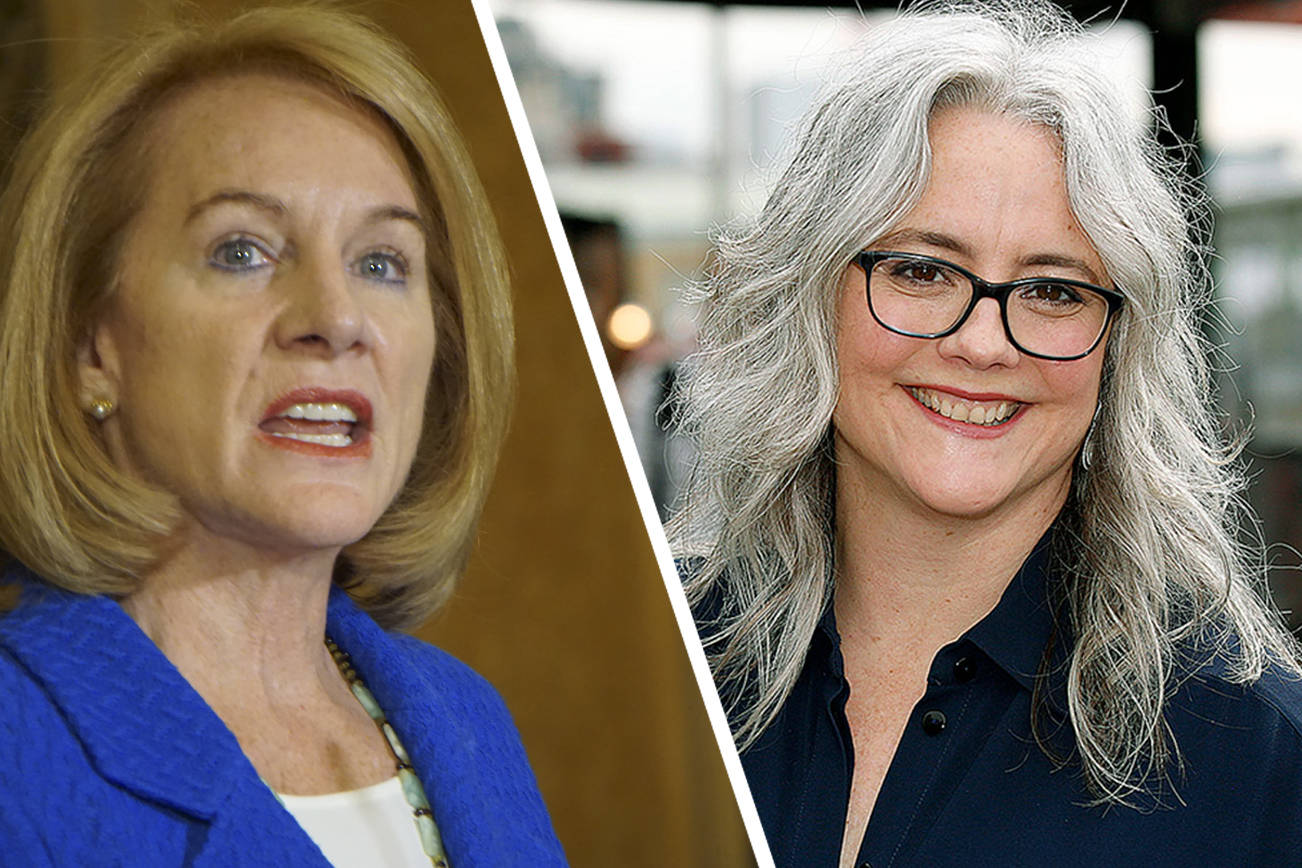Later this spring, Rainier Brewing will release a new product called Rainier Pale Mountain Ale.
Beyond the general excitement that comes with the opportunity to sample yet another new beer on the market, this brew carries historic significance: It will be the first Rainier product brewed in the Seattle area since the turn of the 21st century.
Rainier Brewing can trace its Seattle history back to—depending on whom you ask—1883, with the founding of the Hemrich & Kopp brewery; 1878, a date Rainier marketers seem to have invented in the 1930s to mark its founding; or 1893, when Seattle Brewing and Malting began making Rainier in Georgetown. (This interview cites 1878, firmly in the Rainier tradition. Hat tip to Kurt Stream’s wonderful book Brewing in Seattle for explaining this tangled history). Both the Georgetown facility and the later Rainier Brewing building in SoDo—the one with the famous red R on top—continue to be Seattle icons. But in a story not unique to Rainier, the brand for decades has been sold and traded among large conglomerates with little connection to Seattle. Today the brand is a subsidiary of Pabst Brewing, and the classic Rainier lager found in the grocery store is brewed at Pabst’s giant facility in California. The Pale Mountain Ale, by contrast, will be brewed at Red Hook’s brewing facilities in Woodinville.
So the question is: With our prodigal beer coming home, do we slaughter a fattened calf to celebrate? Or do we turn our backs like spurned lovers? We asked John Wilhelm, the general manager for the Pabst Local Legends brands who is overseeing the launch of Rainier Pale Mountain Ale, to make the case.
First off, can you tell us how it worked out that Rainier would be brewing a beer in the Seattle area again? We have a pretty significant archive of Rainier brands and beers that we have brewed and produced in the past. The Rainier Pale Mountain Ale is an inspiration from pale ales we brewed in the post-Prohibition era, as well as bottles and labels that we produced almost 80 years ago. So we took that inspiration, and have now created Rainier Pale Mountain Ale from it.
When you say inspiration, are you following exact ratios, or just using specific hops? Our brewmaster, Greg Deuhs, took a look at the recipes and used some of the same ingredients, same hops and malts we used in the past, and used that for inspiration. This is actually brewed with Yakima Valley hops. It’s exciting be able to take things we’ve done in the past and recreate them for our current consumers.
Obviously you guys could have taken those recipes and brewed them in California. Why Woodinville? Washington is where it all started for us. We’ve had a tremendous history and heritage of brewing in the Northwest since 1878. We were brewing in Washington 11 years before statehood. So it’s exciting for us to be able to brew a Rainier product again in the state of Washington. Combining that with our historic recipes and heritage we have, it creates a great opportunity and we are excited.
[Pabst] owns other popular regional beers, like the “National Beer of Texas,” Lone Star. How do you go about being respectful to the heritages while running a modern, profitable business? What it comes down to is understanding what’s important to a consumer in those local markets. There is a tremendous amount of love and passion, obviously, that Seattle and Washington beer consumers have for the Rainier brand; same thing for some of our other brands too. Understanding those local insights is key, and making sure we stay true to who the brand is.
[When you talk about Rainier] you say “we.” But I’m sure there are readers who will say you’re Pabst, not Rainier. We are honored to be continuing on the Rainier heritage in the Pacific Northwest. we have been brewing beer since 1878 and have been part of the beer community for a number of years. It’s a great community, a great beer community; for us to be able to carry on this heritage, and [to] carry on the legacy of Rainier is very, very special to us.
But is this really the same Rainier beer company that’s been brewing beer since the 1800s? I think the most important thing is we still have Rainier lager. We’ve been brewing Rainier lager since 1878 and have been doing business in the Northwest since then.
You don’t think the mergers and the sales have complicated that continuity? When you say continuity, what do you mean?
When you say things like “since 1878,” that suggests that it’s been the same company since 1878. But there have been many mergers. When it became a Pabst product, a lot of people feel that was the real end of a Rainier beer as people knew it in the ’60s and the ’70s. I’m not necessarily endorsing that view, but it’s important to address. We’re fortunate enough for Rainier to be a popular beer in the Pacific Northwest in the state of Washington and there’s still a tremendous amount of love and loyalty our consumers have for the brand, and there’s a tremendous amount of love and loyalty we have for them. We still have the recipes; we still have the marketing, we still have a number of things we’ve been doing for years that we try to stay true to. To maintain that heritage and continue to move forward with the brand is really our focus.









